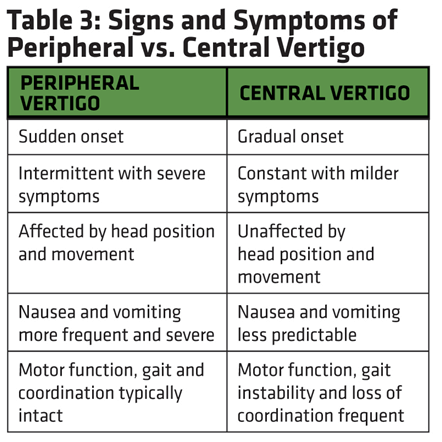Benign Paroxysmal Positional Vertigo
There are many different types and causes of vertigo and therefore it is important to initially seek medical advice ot obtain a clear diagnosis. Vertigo is usually classified into two categories: Central or Peripheral Vertigo. See the table below for signs and symptoms of each:
Two Peripheral types of Vertigo which are treatable by your physiotherapist are:
1. Benign Paroxysmal Positional Vertigo is the most common and is a specific type of vertigo caused by loose microcrystals in the inner ear, resulting in dizziness when the head is turned in different positions.
Your physiotherapist can give you exercises to relocate these crystals and regain your balance. The Epley Maneuver and the Dix-Hallpike Maneuver are the most commonly used techniques to assess and treat this condition. Physiotherapists can also help with habituation exercises and vestibular rehabilitation exercises to help manage other types of vertigo and improve symptoms of dizziness.
2. Cervical vertigo, also called cervicogenic dizziness, is a feeling of disorientation or unsteadiness caused by a neck injury or health condition that affects the neck. It's almost always accompanied by neck pain. Your range of motion can be affected, too, and sometimes it comes along with a headache. For this condition manual treatment of the cervical spine and exercises for mobility and strength of the neck would be used.


